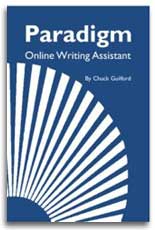For now, don't worry about your essay's final structure, but consider expanding and developing the points listed on your Pro and Con Chart. Think in terms of paragraphs, and consider developing each point as though you planned to build a paragraph around it.
Some points may require extensive development and support, perhaps in a series of closely related paragraphs. Other points may be easy to grasp and so self-evidently true that they could be grouped together in a single paragraph.
Think in terms of paragraphs, and develop each point as though you planned to build a paragraph around it.
This is a good time to use the discovery methods mentioned in Discovering What to Write. You might also review the methods of paragraph development — examples, explanation, comparison and contrast, facts — discussed in Thesis/Support Essays.
You may already sense that developing paragraphs in support of your proposition will be different from developing paragraphs in opposition to it. That's because when you develop arguments for your proposition, you are confirming; when you develop arguments against your proposition, you are refuting. Both kinds of development are essential. You must show that your own ideas are clear, reasonable, and solid. You must also show how your opposition's case is weak. You must show that your own ideas are clear, reasonable, and solid. You must also show how your your opposition's case is weak.
Writing paragraphs that confirm or support your proposition is similar to what you've done in the past. Most often you'll state the paragraph's main point in a topic sentence and go on to explain or define key terms, then give specific details that support the topic sentence. Paragraphs refuting the opposition, however, are usually concerned with exploring another person's thinking, especially with pointing out errors of logic and failures of insight. If you can show that your case is strong and the opposition's is weak, chances are excellent that the reader will be on your side at the end-and that's the goal.




